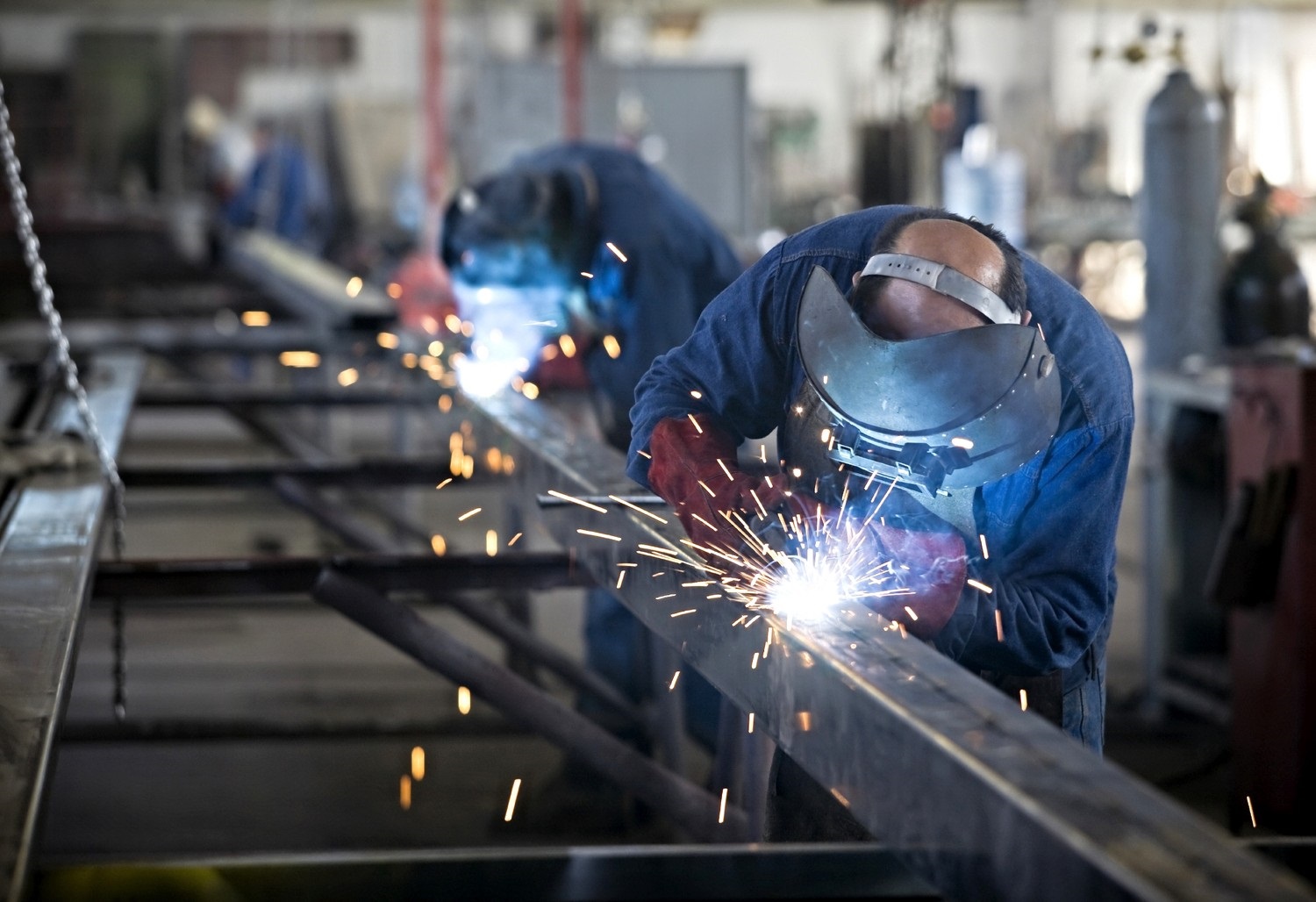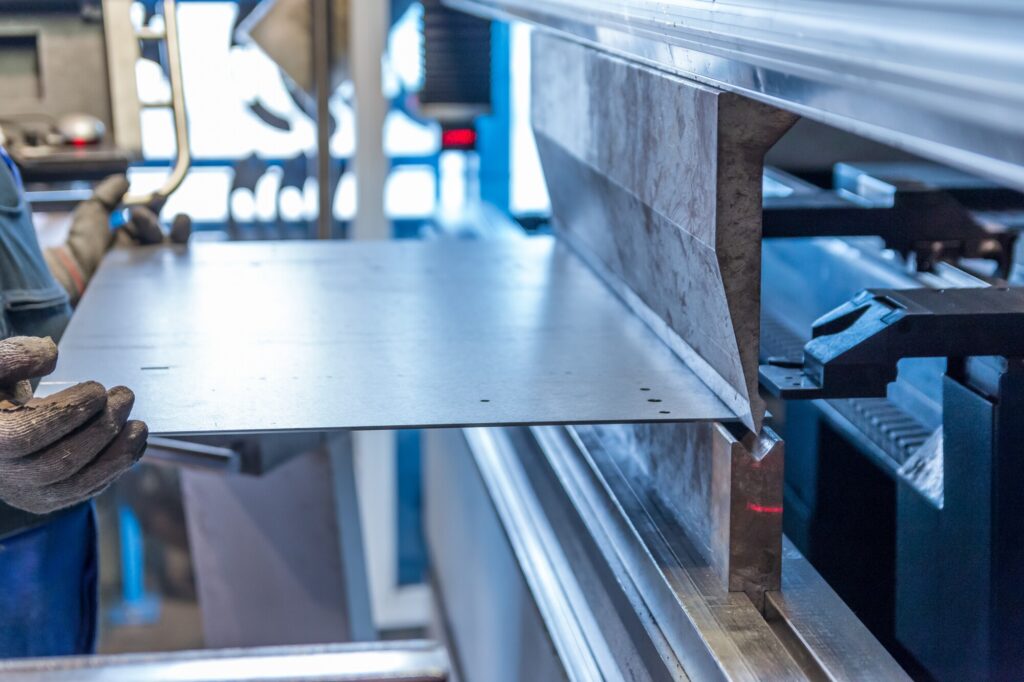Comprehensive Analysis of Cutting-Edge Techniques in Steel Manufacture Market
As the steel fabrication market proceeds to progress, the combination of advanced techniques has actually come to be essential for remaining competitive and meeting the needs of contemporary manufacturing requirements. From laser cutting advancements to the use of robotics and 3D printing in steel manufacturing, the landscape of manufacture methods is swiftly altering. With each technology bringing its own set of challenges and advantages, a comprehensive analysis of these strategies is critical for business intending to streamline their processes, boost precision, and inevitably, elevate the quality of their steel manufacture output. In this dynamic sector where innovation plays an essential role, comprehending the subtleties of these cutting-edge methods is not simply an option however a need for those aiming to forge ahead in the ever-evolving globe of steel manufacture.
Laser Reducing Improvements
In the world of steel manufacture, laser reducing improvements have actually changed the accuracy and efficiency of metal shaping procedures. By using the power of focused laser beam of lights, producers can now attain unparalleled levels of precision when reducing with different sorts of metals. This modern technology makes it possible for complex styles to be executed with very little material wastefulness, making it a cost-effective remedy for markets requiring high accuracy parts.
One of the key benefits of laser cutting is its capability to handle a wide variety of materials, including stainless-steel, aluminum, and carbon steel, easily. The procedure produces tidy, burr-free sides, getting rid of the requirement for additional finishing steps. The non-contact nature of laser reducing reduces the threat of material contamination, resulting in higher high quality end products.
Additionally, laser cutting equipments can be set to make swift, accurate cuts, significantly minimizing production time compared to typical cutting approaches. This rate and accuracy make laser cutting specifically appropriate for automation environments where effectiveness is paramount. As innovation continues to development, laser cutting is poised to play a progressively essential role in the steel construction sector.

CNC Machining Innovations
The evolution of CNC machining innovations has actually introduced a brand-new period of precision and efficiency in the steel construction sector. Computer System Numerical Control (CNC) makers have transformed steel construction by supplying unparalleled accuracy and repeatability in the manufacturing process. steel fixing. Among the vital advancements in CNC machining is the assimilation of innovative software program systems that make it possible for real-time monitoring and adjustments, resulting in improved productivity and quality assurance
Additionally, the advancement of multi-axis CNC devices has permitted the fabrication of intricate steel parts with detailed styles that were previously challenging to generate. These equipments can execute a wide variety of machining procedures, consisting of milling, boring, turning, and grinding, all with high degrees of accuracy.
Additionally, the consolidation of automation and robotics in CNC machining has streamlined manufacturing procedures, reduced preparations, and lessened the margin of error. This integration of sophisticated modern technologies not only boosts performance yet likewise ensures regular high quality across all made steel components. To conclude, CNC machining innovations proceed to drive developments in the steel fabrication market, setting brand-new requirements for accuracy and efficiency.
Automated Welding Technologies
Automated welding technologies have actually transformed the steel fabrication sector, enhancing performance and accuracy in the welding process. These sophisticated innovations utilize computer-controlled systems to automate the welding process, bring about greater efficiency degrees and boosted weld quality. One of the vital advantages of automated welding is the capability to do complicated welds with consistent accuracy, reducing the chance of errors and rework.
Robotic welding systems go to the forefront of automated welding innovations, offering unmatched speed and precision. These systems can take care of a large range of welding jobs, from easy to complex, easily (steel fabricators melbourne). By making use of advanced sensors and software application, robot welders can adjust to variations in material and joint geometry, making sure an attire and reliable weld
Additionally, automated welding innovations boost office security by decreasing the exposure of human welders to great site unsafe fumes and informative post extreme heat. As the steel construction market proceeds to advance, incorporating automated welding technologies will be vital for business seeking to remain competitive and satisfy the growing demands for premium bonded items.
Robotics Combination in Construction
Making use of robot systems in fabrication procedures has actually ended up being a crucial approach for improving efficiency and accuracy in modern-day production settings. Robotics assimilation in steel manufacture supplies a myriad of advantages, consisting of raised efficiency, enhanced high quality control, and improved security actions. These innovative robot systems are furnished with sophisticated sensors and programming abilities, allowing them to execute detailed tasks with a high degree of precision and repeatability.
Among the crucial benefits of robotics assimilation in steel manufacture is the capability to automate repetitive jobs, such as material handling, reducing, welding, and setting up processes. This not just accelerates production cycles yet likewise reduces the threat of human mistake, bring about higher total product quality. Furthermore, robots can run 24/7, considerably boosting manufacturing output and conference tight job Read Full Article due dates.

3D Printing in Steel Production
Having revolutionized the steel construction market via robotics assimilation, the growing exploration of 3D printing in steel production is positioned to more advance the realm of contemporary production strategies. 3D printing, additionally called additive manufacturing, provides unmatched layout liberty and intricacy, making it possible for the production of complex steel frameworks that were formerly unattainable via standard manufacturing methods. By utilizing computer-aided style (CAD) software application, makers can exactly manage the layer-by-layer deposition of steel product, leading to get rid of improved geometries and functionalities.
One of the essential advantages of 3D printing in steel manufacturing is its capability to minimize product waste substantially. Unlike subtractive production processes where excess material is trimmed away, 3D printing just makes use of the required amount of steel required for the last component. This effectiveness not only leads to cost financial savings however likewise aligns with lasting production methods by lessening environmental influence.
In addition, 3D printing enables quick prototyping and modification, enabling the production of tiny sets of complex steel components with brief lead times. As the modern technology remains to grow and end up being more accessible, its integration into mainstream steel manufacture procedures is expected to drive technology and effectiveness across the market.
Final Thought
Finally, the steel fabrication industry has seen considerable improvements in strategies such as laser cutting, CNC machining, automated welding, robotics assimilation, and 3D printing. These sophisticated technologies have revolutionized the way steel items are manufactured, leading to increased cost-effectiveness, efficiency, and precision. Continued investment in these cutting-edge techniques is important for the market to remain affordable and satisfy the demands of modern manufacturing procedures.
As the steel fabrication sector proceeds to develop, the assimilation of sophisticated strategies has actually come to be crucial for staying competitive and satisfying the demands of contemporary production requirements.One of the key benefits of laser cutting is its capability to take care of a large array of products, consisting of stainless steel, light weight aluminum, and carbon steel, with simplicity.Automated welding modern technologies have actually changed the steel construction industry, improving effectiveness and accuracy in the welding procedure.Having actually revolutionized the steel manufacture market via robotics combination, the burgeoning expedition of 3D printing in steel manufacturing is poised to additional development the realm of modern production techniques.In final thought, the steel fabrication market has seen considerable advancements in strategies such as laser cutting, CNC machining, automated welding, robotics combination, and 3D printing.